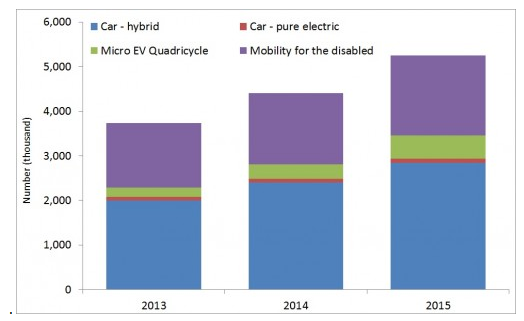It is December. 2013 is coming to an end, and while the holiday season is a time of celebration, tradition, and festivity, it is also prime time for year-end retrospectives. Even though rapid innovation in all electronic circuits and systems is the norm, in particular developments in three sectors caught my eye this year. What follows is an abbreviated level description of these agents of change, in no particular order.
The “Maker Movement” is growing exponentially
By empowering people to build their own products and share ideas with each other technical innovation is becoming rapidly democratized through what is being called the Maker Movement, a loose confederation of people undertaking DIY engineering-oriented pursuits including electronics, robotics, and 3-D printing.
The most compelling evidence to date that Makers are become mainstream was when Intel's CEO Brian Krzanich and Arduino founder Massimo Banzi shared the stage at Maker Faire Rome earlier this year to announce a collaboration centering on Intel's new Quark microcontroller series. Mouser Electronics then announced it is making available the Intel Galileo Development Board designed around the Intel Quark X1000, a 32-bit, single core CPU operating at speeds up to 400 MHz. Galileo is fully compatible with Arduino shields designed for the Uno R3, which are accessory boards that plug into an Arduino board to extend its capabilities. Galileo is also software-compatible with the Arduino Software Development Environment.
New Options for Lighting Designers
Although LEDs already have caused a “paradigm shift” in the lighting industry, according to the market research firm IHS only 2.8 percent of the total 18.6 billion lamps shipped in 2013 is forecast to use LED technology, so there are even bigger opportunities ahead. This year, in addition to advances in discrete High-Power Lighting LEDs other product categories entered the LED lime light including mid-power LED chips, mid-power multi-chip packages and AC LEDs. Let's look at two examples (note that all products are available through Mouser Electronics).
The Luxeon 3535 2D LEDs from Philips Lumileds are a two-LED chip package with up to 140lm/W efficacy that can reduce the LED count and cost in retrofit lamps. The mid-power LEDs are offered across a full spectrum of correlated color temperatures (2700K-6500K) with a minimum CRI of 80.
Since traditional LED lighting is DC driven, for conventional applications it must be accompanied by an AC – DC conversion device. As a result developers are increasingly looking to AC-LED lighting products to save system cost and make better use of space. Seoul Semiconductor has parts that do not need a converter such as the Acrich2 AC LED modules. These devices also have a high power factor that can result in optimal energy saving in many lighting applications.
Revving up support for HEV and EV designs
As 2013 winds down, we're reminded that it's been a very good year for HEVs and EVs and there are more to come. A new report from IDTechEx “Electric Vehicle Forecasts, Trends and Opportunities 2014-2024” predicts that near term the total market for hybrid and pure electric vehicles will grow from 3.8 million vehicles (of all types) in 2013 to over 5 million such vehicles in 2015.
Sales forecast for some volume sectors of electric vehicles

Source: IDTechEx
In the race to deliver innovative, high-quality automotive systems the right capabilities can make all the difference. As such, Mouser Electronics' Automotive Applications site now feature sections devoted to emerging EV and HEV designs in three new application areas: Battery Charging, Start/Stop System, and HEV Main Inverters. At a glance, users get access to detailed block diagrams, explaining each of the system's operations. Clicking on a component within the block in the diagram pulls up a Mouser-stocked parts list needed to quickly build that piece of the system. The Automotive Applications site also boasts technical articles, application notes, white papers, instructional videos, solution guides, and more.
By Murray Slovick
Advertisement
Learn more about Electronic Products Magazine





